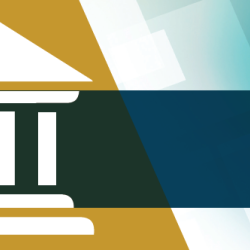Investigation of California Commission on Judicial Performance Both Hits and Misses the Mark
 In 2016, California legislators, pressed by court users and judges, authorized the State Auditor to investigate the Commission on Judicial Performance, created in 1960 as the nation’s first state judicial conduct body. A commission lawsuit claimed records confidentiality, but a September 2018 settlement allowed the Auditor to proceed. She filed her report in April 2019, in time for the legislature’s 2019-20 budget season (the report recommended increasing the commission’s budget).
In 2016, California legislators, pressed by court users and judges, authorized the State Auditor to investigate the Commission on Judicial Performance, created in 1960 as the nation’s first state judicial conduct body. A commission lawsuit claimed records confidentiality, but a September 2018 settlement allowed the Auditor to proceed. She filed her report in April 2019, in time for the legislature’s 2019-20 budget season (the report recommended increasing the commission’s budget).
There is growing interest nationally in judicial misconduct and the entities that operate under varying titles, structures, and procedures in each state (and federally) to investigate complaints. In 2018, IAALS convened commission officials and observers as it prepared its own Recommendations for Judicial Discipline Systems.
The auditor based her analysis in part on stratified 2013-2019 samples of 30 completed investigations and 40 complaints closed at intake. Among other things, she recommended better supervision of commission investigators; a bicameral commission rather than the current, constitutionally mandated, unitary structure; and greater transparency in commission operations, including electronically filed complaints. IAALS’ analysis of how commissions can best serve sometimes conflicting objectives puts some of the auditor recommendations into broader context.
Here are brief comments about two of the auditor’s 85-page report’s many observations. First, the report clearly documented shortcomings in commission operations. Commission investigators, charged the report, often failed to look beyond a single complaint’s allegations for more pervasive behavior. That points to an often unexploited commission attribute that appellate courts lack: the ability to review judges’ conduct over a series of events, not just actions in one case. The report referred to “missed opportunities to expand the scope of investigations to determine if misconduct was the result of a larger, ongoing problem.” Similarly, IAALS encouraged commissions to “pay attention to emerging patterns of problematic behavior reflected in complaints (even non-actionable complaints) and other sources.”
A third of the thirty-case sample revealed a failure to follow leads that suggested patterns of misconduct. In one instance an investigator “learned that the judge allegedly made many aggressive and intimidating [possibly “criminal”] comments while on the bench,” but failed to request audio recordings that court reporters said might substantiate the allegations.
The commission said it would “implement the recommendations regarding improving its intake and investigation processes” but cautioned about “potential due process issues raised by certain recommendations.”
Second, the report repeatedly contrasts the commission’s unitary structure to “best practices” without acknowledging that reasonable people disagree about what’s “best.” The report paraphrased findings in the American Bar Association’s 1994 Model Rules for Judicial Disciplinary Enforcement that “one of the most consistent complaints . . . from judges and their attorneys was the perceived unfairness of a system that combines investigation, prosecution, hearing, and decision making into a single process.”
The report posited an analogy: allowing commission members to adjudicate misconduct even though they may have seen investigative stage evidence that was ultimately ruled inadmissible was akin to including detectives on a criminal jury who had investigated the case at bar. The commission has characterized the analogy as “unfortunate and simply wrong,” and that characterization seems apt: for one thing, the report acknowledged that its sample yielded no instance of formal reliance on “unproven information.” It warned against “unspoken effects,” but we expect judges in bench trials to base decisions on evidence they deem admissible, not on every allegation that the parties raise.
The report continues, relying on the ABA model rules: “best practices recommend a bicameral [commission] structure . . . that separates the functions of investigating and disciplining judges—an approach that 17 states have implemented.” The report also somewhat carelessly claimed that a bicameral structure “ensures that a commission bases its disciplinary decisions only on proven misconduct” (emphasis added).
IAALS’ recommendation is more realistic: “a commission should, through its structure or internal checks, separate the investigation and prosecutorial functions from the adjudicative functions.” IAALS notes, as does the auditor, “[j]udges argue that [a one-tier structure] violates due process given a commissioner’s likely difficulty during the adjudicative stage of ignoring problematic evidence submitted during the investigative stage.” But it also explained—ABA recommendation notwithstanding—that most states still use a unitary structure and “the twenty or so supreme courts that had considered the due process objection as of 2007 rejected it, primarily because appellate review in the supreme court is available to correct conflict of interest-related errors.” (The California supreme court, the commission noted, itself rejected the argument; the auditor responded that the precedent was dated.)
Furthermore, “[s]everal [IAALS] Convening participants argued that bifurcated structures are necessarily costly and may take longer to reach a resolution—causing delay that is ‘agonizing for judges who have their reputations up in the air’—and that internal structural checks can seemingly overcome one-tier threats to objectivity.” It’s one thing to say that the ABA’s bicameral structure recommendation merits consideration, but another to certify it as unequivocally the “best.” Indeed, Washington state’s Commission on Judicial Conduct, whose operations the auditor cites approvingly, is itself a unitary body.
An auditor’s job is not to present “on-the-one-hand-on-the-other-hand” observations. But the tensions inherent within judicial conduct commission operations, which IAALS has spelled out, make all-or-nothing recommendations problematic.



